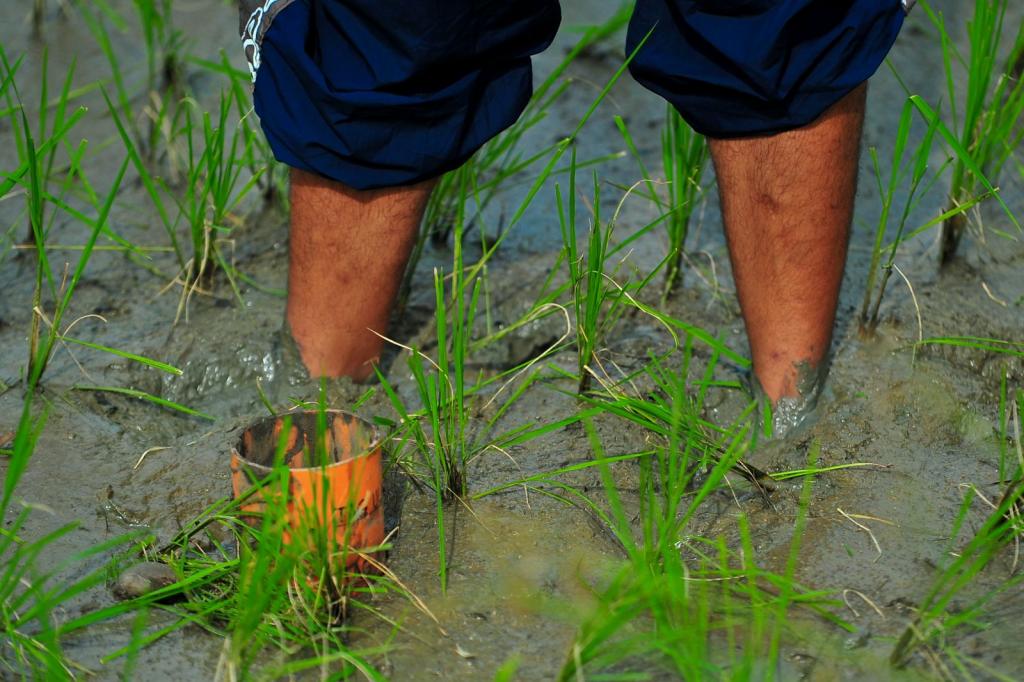Myanmar pushes for adaptation in agriculture during climate negotiations

The Myanmar government presented potential adaptation measures, practices and technologies for their country during this year’s climate negotiations.
Agriculture contributes 30% to Myanmar’s gross domestic product and provides 60% of the employment opportunities. However, food and nutrition insecurity is still a large problem for communities in the country. To provide for its increasing population and their increasing demand for food, Myanmar needs to also increase its agricultural productivity, even with the threat of climate change.
Aiming for a climate-smart Myanmar
Addressing climate change, the Myanmar government identified adaptation measures, agricultural practices and technologies which would sustainably enhance food security, resilience and productivity in the face of climate change.
Implemented at the policy, planning, investment and institutional levels, adaptation measures are defined as the wider policy measures and institutions that help agricultural systems adapt to climate change. On the other hand, agricultural practices and technologies, which are applied at the field, farm and landscape levels, complement the adaptation measures.
These recommendations were submitted to the United Nations Framework Convention on Climate Change (UNFCCC) Subsidiary Body for Scientific and Technological Advice (SBSTA) 44th meeting held in May 2016 in Bonn, Germany. Thirteen parties, including the Netherlands on behalf of the European Union, and Vietnam on behalf of the Association of Southeast Asian Nations, submitted their views and experiences of the current climate challenges they face and best-bet examples in prioritizing adaptation in agriculture during the meeting.

Alternate wetting and drying is one of the priority adaptation practices Myanmar identified in their submission. Collaboration with other international and regional organizations would complement national initiatives in climate change adaptation. Photo: IRRI
Raising the adaptive capacities of agricultural systems
The adaptive measures Myanmar forwarded could be classified under: (1) governance, policy frameworks and country readiness; (2) local planning; (3) strengthening research and extension services; and (4) finance.
The Myanmar government acknowledges that agriculture, early warning systems and forestry should receive top priority in their National Adaptation Programme of Action, as these three sectors are directly affected by climate change. On the community level, the Climate-Smart Village (CSV) approach would be implemented to ensure appropriate practices are introduced to and adopted by the people.
Consistent long-term investment is needed in developing knowledge systems, thus Myanmar will focus on strengthening its National Agricultural Research and Extension System (NARES). Other resource mobilization opportunities, such as international sources, public-private partnerships, community-based initiatives and corporate funding, would be tapped to supplement the public funding allocated for adaptation and mitigation.
Addressing local contexts and diversity of agricultural systems
Similar to other Southeast Asian countries, rice is the main crop cultivated on 50% of the agricultural land in Myanmar. The country however grows more than 60 different crops and also engages in livestock production and fisheries in their various agro-ecological zones. The government is thus developing adaptation strategies tailored to address specific challenges and contexts within different levels.
The Ministry of Agriculture, Livestock and Irrigation of Myanmar is implementing the priority practices and technologies for adaptation in agriculture. As mentioned before, these would enhance productivity, food security and resilience of communities in a sustainable manner. Some of the priority practices and technologies include: cropping system adjustment, use of stress-tolerant crop varieties, crop diversification and intensification, alternate wetting and drying, improved natural resource management and integrated farming systems.
It is not only the technologies and practices that could contribute to initiatives for climate change adaptation in agriculture. Collaboration with other international and regional organizations would also complement national initiatives towards this objective.
SBSTA and other international organizations could support the identified measures and practices through capacity building in all levels, from household to national level. The Myanmar government also recommended integrating and prioritizing gender and social inclusion in future actions of SBSTA. National initiatives in adaptation in agriculture could be supplemented through the technology transfer mechanism and the financial mechanism for resource mobilization of the UNFCC.
One of the documents used as bases for submission was the Myanmar’s Climate-Smart Agriculture (CSA) Strategy launched in February 2016. The national consultation and subsequent development of the ‘Climate-Smart Agriculture Strategies in Myanmar’ was facilitated by the CGIAR Research Program on Climate Change, Agriculture and Food Security in Southeast Asia (CCAFS SEA) and the International Rice Research Institute (IRRI).
Read more:
- Myanmar’s climate-smart agriculture strategy: a roadmap to resilience and sustainability
- Countries call for more action on agriculture ahead of climate negotiations
- Negotiators and scientists discuss country emissions targets for agriculture at SBSTA 44
Amy Cruz is the junior communications specialist for the World Agroforestry Centre Philippines. She is also a communication consultant with the CCAFS SEA program.



